If Tiger Woods can come back and win The Masters after battling degenerative disc disease then you can too, right?
Well, that’s still to be determined but for now let’s focus on things you CAN do to play golf with degenerative disc disease(DDD).
Then, you can start thinking about winning The Masters.
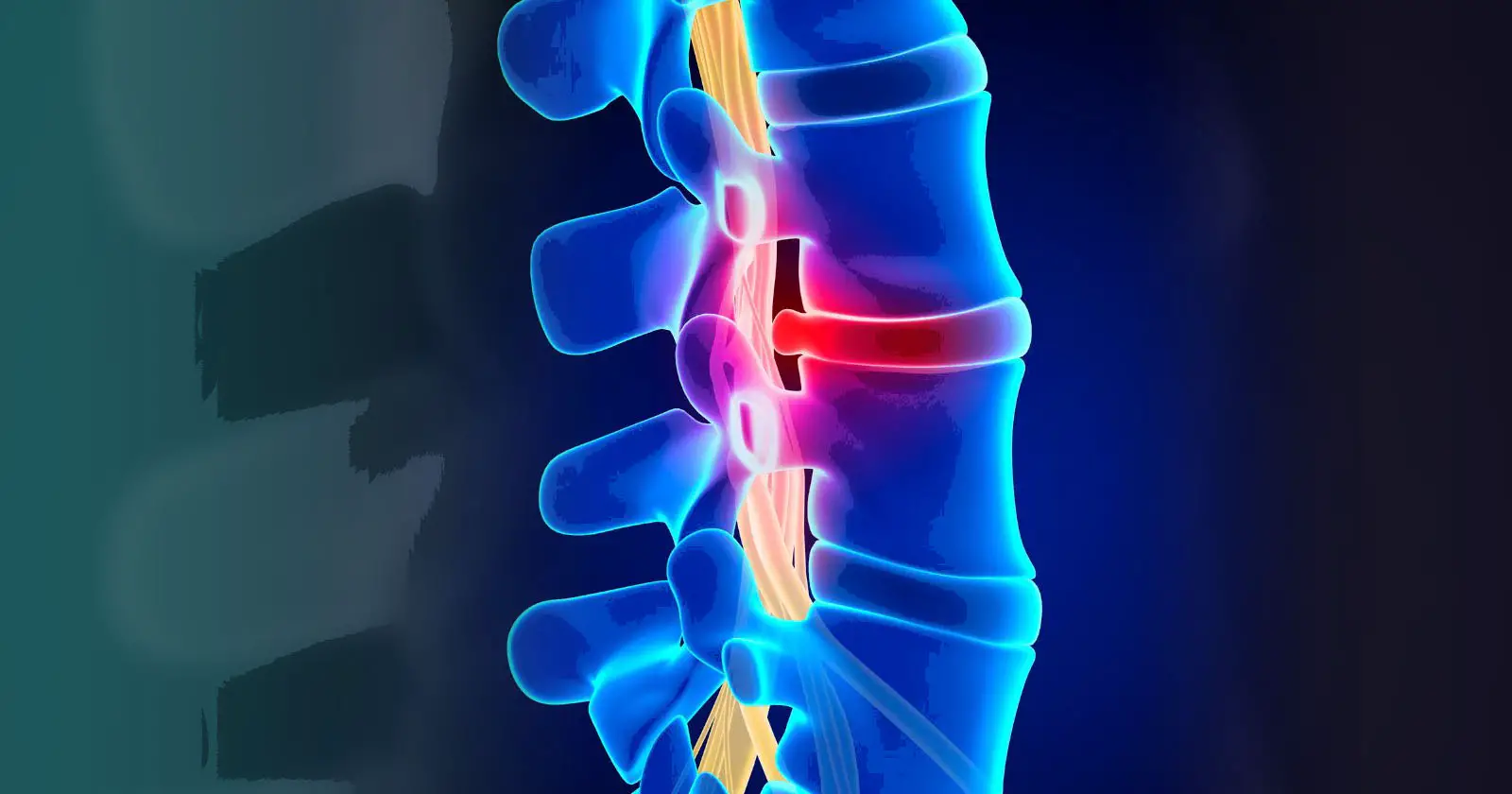
Degenerative disc disease (DDD) is becoming more common in younger golfers. While this condition will affect older golfers due to a natural degeneration of the spinal discs due to age, many players ask whether they can play golf with degenerative disc disease.
Can I play golf with degenerative disc disease?
You can definitely play golf with degenerative disc disease. Still, you may need to change a few aspects of your game concerning swing mechanics, consider longer clubs, as well as to use a golf cart instead of walking, and avoid excessive bending and placing excess stress on your back.
Let’s explore this condition, why it happens, and why it’s becoming more common in the younger players (mid-’20s and 30’s), as well as how long before you could play after fusion surgery and some exercises and on course changes you can make to reduce the pain and discomfort from DDD.
What is degenerative disc disease and how does it affect golfers
The spinal disks in between the spinal vertebrae act like shock absorbers in the spine. As you get older, these spinal disks degenerate due to wear and tear, and this causes a lack of cushioning between the vertebrae.
As the spinal disks reduce in effectiveness, the vertebrae may come into contact with each other causing conditions from osteoarthritis to the more chronic illness of degenerative disc disease, also known as DDD.
DDD can occur in the neck and the spine. Still, the resulting condition makes it difficult to bend and turn, which affects a golfer’s ability to swing a golf club at maximum power without discomfort and having to resort to painkillers and then surgery to fuse vertebrae and recover mobility and quality of life.
Golf with degenerative disc disease
The spinal discs that are affected by DDD assist with mobility in the spine and neck, and once the disks start to deteriorate, the swing’s motion becomes compromised as you can’t swing at full power and rotate properly through the swing.
This condition also affects your ability to bend down or execute any action that involves the lower back, such as squatting and even walking, depending on the severity of the condition.
Considering the range of motions required in golf, many involve the neck, head, back, and hip movement.
In each of these, the spine is involved, and while simple strokes like putting or chipping would not be affected, bending the backbone to get into position for those shots could become very uncomfortable.
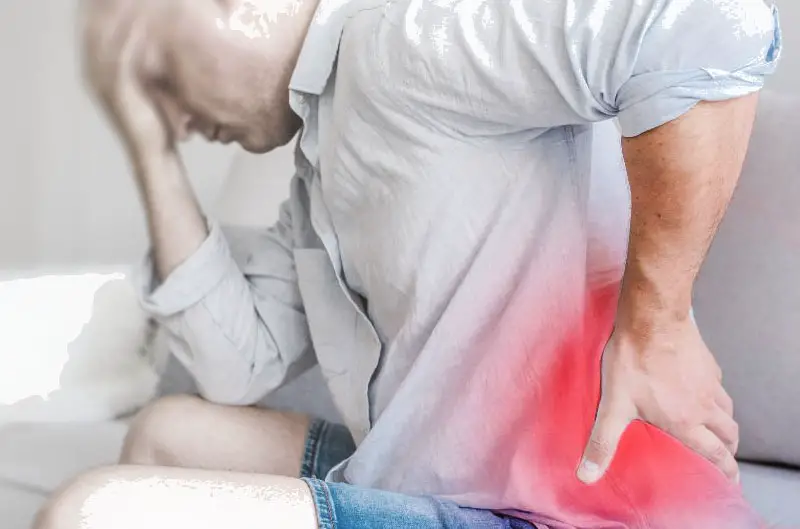
When you look at the full swing, there is a lot of torque and twist that happens during the golf swing and where the vertebrae come into contact with each other under those conditions, completing a full swing with power becomes very challenging, and this will reduce both distance and accuracy.
Should I play golf if I have lower back pain?
As a guideline, your ability to play golf with lower back pain will always depend on the degree and severity of the pain and discomfort experienced while you make your swing . You can injure your back by lifting heavy objects or twisting or turning the wrong way and many times, your injury may not be golf-related.
Suppose you have tweaked a muscle in your back and have applied heat packs, and the pain is not severe, and you can swing without any real discomfort.
In that case, you can play, but to avoid aggravating the injury, you should not carry your bag and even consider taking a cart to reduce the pressure on your back while walking.
You may also need to dial down the power to reduce the torsion forces acting on your lower back during the swing. But if the pain is intense enough that you can not turn without wincing, or you can swing properly, then you need to skip the round and give your back a rest.
The final decision on whether you should play golf with lower back pain rests with you, but you need to be objective about this, as while you may WANT to play a round, the wise decision may be to give it a break and allow your back to recover.
Tiger Woods suffered with degenerative disc disease
Before 2017, Tiger Woods suffered badly from DDD, resulting from years of executing swings with immense power and torsion and having undergone three failed back surgeries since 2014.
In 2017, Tiger underwent a spinal fusion procedure where surgeons removed the spinal disk and fused the spine at the base resulting in greater stability.
The fusion involved the insertion of a metal cage at the base of his spine that was packed with bone graft and secured with screws. This effectively eliminated the pain and improved the stability of his spine.
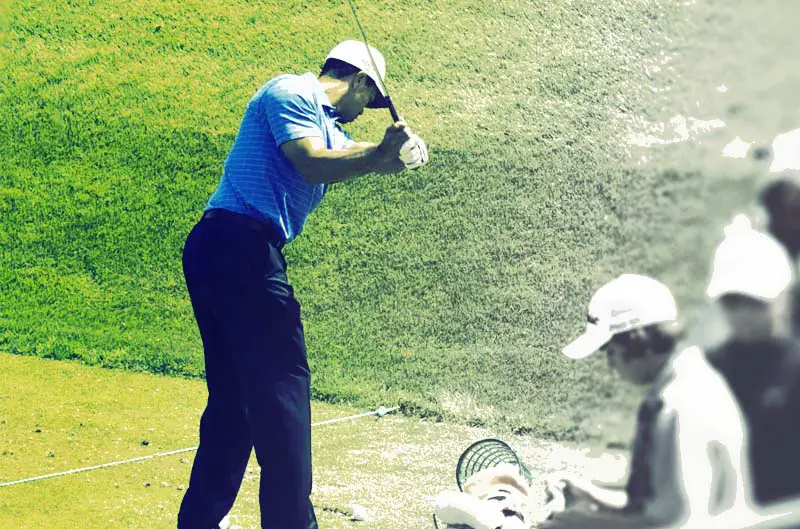
After the surgery and recovery, using physical therapy and gradually building up his strength and flexibility, he returned to the game triumphantly, winning the 2019 Masters while silencing critics who believed his career was over.
This condition is becoming more common among golfers, and many osteopaths attribute this to the swing mechanics involved, lack of flexibility, and continued repetition of the swing over time.
Lower back injuries are listed as one of the most common, which means that many golfers, even professionals, suffer from this condition.
How long after a spinal fusion or back surgery can I play golf?
The nature of the surgery means you need to recover properly before playing golf again. However, in a study done with more than 500 spine surgeons, golfers can return to their game at full power within six months to a year after the procedure.
Another result from this study showed that most golfers that returned to golf could achieve their pre-operative game levels, and some even improved their handicaps. This was attributable to the improved stability in the lower back
Before returning to their full power game, golfers that underwent fusion surgery required ongoing physical therapy to strengthen the back and improve their flexibility.
Returning to golf would require a gradual increase in swing power, but any golfer looking to return to the game would have to follow the recovery and rehabilitation process diligently and with discipline to avoid game-ending injuries that can happen if the back is over-stressed before full recovery.
Tips for playing golf with degenerative disc disease
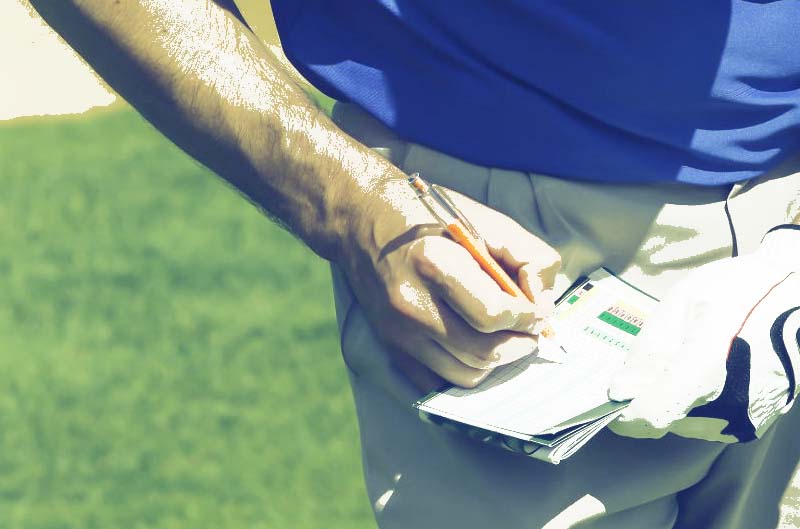
If you suffer from DDD as a golfer and whether you have had surgery or not, there are a few simple ideas and tips you can use to alleviate the symptoms and reduce the discomfort of the condition when playing or practicing.
- When resuming your golf after diagnosis or surgery, swing your longer shafted clubs at 50% before attempting more powerful swings or using the shorter clubs. This is because you bend less using long clubs, putting less pressure on the lower back.
- Avoid excessive bending or sitting, adding pressure to the lower back.
- Consider using a longer shaft on your putter to place less stress on the lower back.
- Shift to a more upright swing and use less flex in the spine.
- Wear golf shoes that offer great support, traction, and stability, as improper or poor-fitting footwear can aggravate a lower back condition.
- Don’t play in wet weather, as the risk of slipping or losing traction through the swing could exacerbate the condition.
- Consider a shorter backswing and standing closer to the ball to lower the degree of spinal flexion.
- Bend from your hips and not the upper back, and focus on keeping the spine straight.
- Focus on rotating the shoulders around the straighter spine to reduce lower back movement and pressure.
- Use a golf cart instead of walking.
As you can see, the focus with these suggestions is on reducing the spinal flexion – or bending the spine forward – which creates more tension and stress in the lower back.
Should golfers with degenerative disc disease have surgery?
Not all golfers with degenerative disc disease require surgery and depending on the severity of the condition and how early it is diagnosed, all determine whether surgery would be necessary.
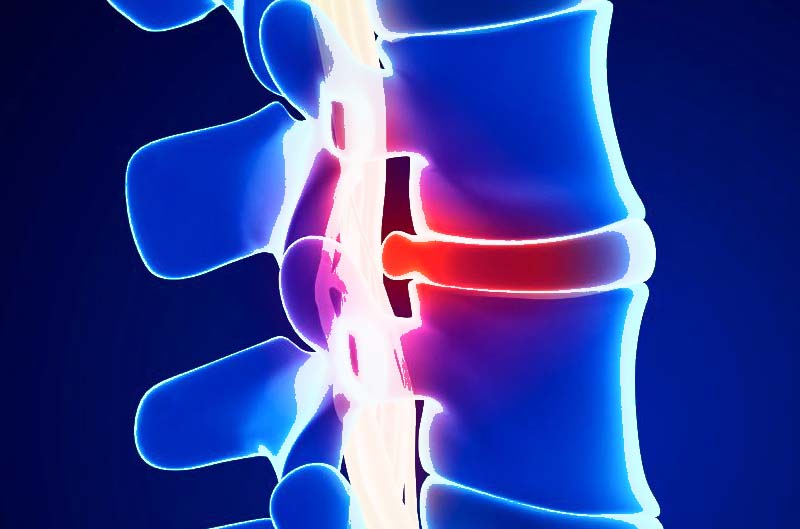
In many cases, strengthening the muscles that support the lower back can reduce the discomfort caused by degenerative disc disease and continue and can even eliminate the need for surgery if the exercise regimen is maintained.
Core strengthening using exercises like plank will assist in maintaining core stability during the golf swing and put less stress on the lower back.
TIP: Stretching properly and correctly before and after your round is also advisable, and many golfers bypass this before teeing off. Exerting that amount of force when your body is not warmed up is inherently risky, especially where the swing mechanics are not efficient.
Arriving early for your round and taking the time to warm up and stretch before teeing off will help you get into the game quicker and reduce the risk of injury in the lower back or flare-up of the existing condition.
This is why professional golfers use a variety of strength and flexibility training to reduce the risk of lower back injury, and you should do the same.
Whether you consult a bio-kineticist specializing in golf or find a good online resource, you will benefit from these exercises and could well avoid surgery.
What is the success rate of spinal fusion surgery?
This surgical procedure has a relatively high success rate of between 70% and 90%.
Most golfers that return to the game after successful surgery and the subsequent rehabilitation report no ill effects with a good recovery back to their pre-surgery level of play.
The modern use of keyhole surgery that doesn’t need the open back surgery of old means that the trauma to the body is far less, recovery is faster, and golfers can start playing that much sooner – but this is provided the rehabilitation program is correctly followed.
What should you do if you have lower back pain when playing golf
If you suddenly experience lower back pain on the course while playing, you need to determine its severity and then decide if you can continue or not. Sometimes this is a tweaked muscle acting up and only requires rest to recover.
If you find that bending forward becomes problematic or progressive discomfort as you continue playing, then erring on the side of caution and ending your round prematurely would be advisable.
Suppose you have anti-inflammatory or pain-killing medication in your golf bag.
In that case, you can try that and see if it works to alleviate the pain and allow you to complete the round, but lower back pain should not be taken lightly, as ignoring it and aggravating it may lead to forced rest and layoff for several weeks.
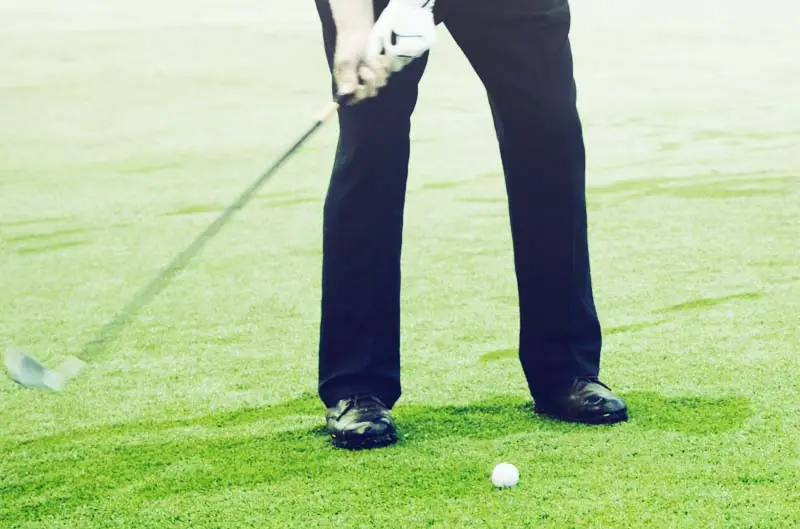
If you do experience persistent lower back pain, you should consult your doctor as early diagnosis can significantly improve your chances for recovery without surgery; while pushing through the pain until it becomes unbearable(like Tiger 🐅 did), eventually forcing you to get a proper diagnosis could leave it a little too late and the only option becomes surgery.
While DDD does occur in most people as they get older, this is not an automatic death sentence for golfers, and not all lower back pain is degenerative disc disease- so rather, find out what the problem is before jumping to any conclusion.
DDD can be determined with an X-ray or MRI; the disc involved and the level of deterioration, prognosis, and treatment can be identified and advised.
To Play, or Not To Play?
Playing golf with degenerative disc disease is entirely possible and whether this means incorporating warm-ups and stretching before and after your round, strengthening your core and muscles that support the lower back, or even modifying your swing and equipment, having DDD does not spell the end for your golf.
Even if you need surgery, the recovery and success rates are good, and provided you are prepared to put in the work post-procedure, you may be back on the tee within six months.
Even if you aren’t at full power to start with, you should be back to your old game or even better within a year.
Follow us on Twitter at https://twitter.com/wolfitgolf and keep us updated on your road to winning The Masters.
Resources
- https://www.nytimes.com/2019/05/15/sports/how-tiger-woods-pga-back-surgery.html
- https://www.ncbi.nlm.nih.gov/pmc/articles/PMC5435149
- https://www.spineuniverse.com/wellness/exercise/getting-your-golf-game-back-after-spine-surgery
- https://www.biospine.com/when-can-i-play-golf-again-recovering-from-spinal-fusion-surgery/
- https://www.webmd.com/back-pain/degenerative-disk-disease-overview
- https://www.hss.edu/golfportal/modifications-for-golfers-with-back-pain.htm
- https://www.spine-health.com/conditions/sports-and-spine-injuries/playing-golf-low-back-pain